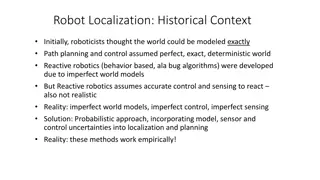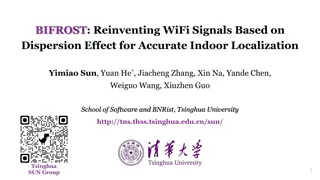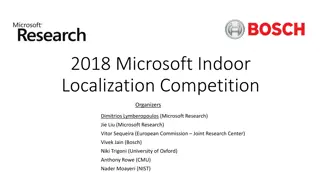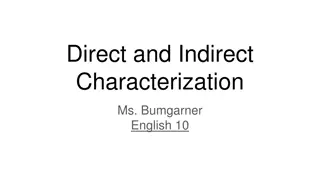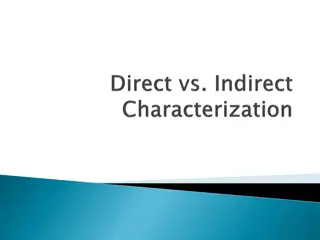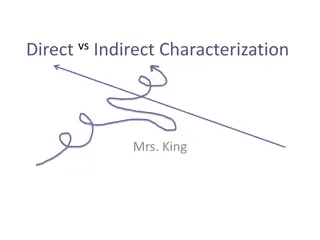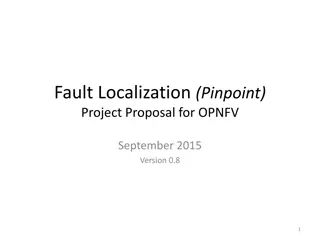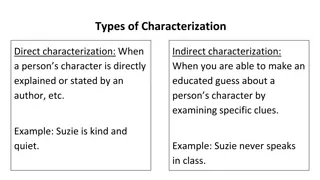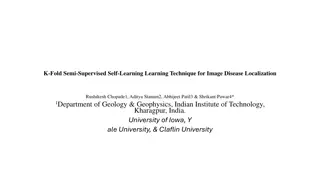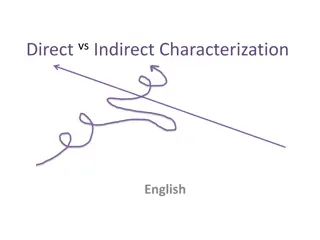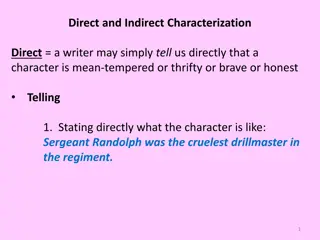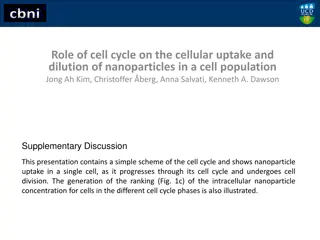Accuracy Characterization of Cell Tower Localization
This research delves into the precise evaluation of cell tower localization to optimize wireless network performance. Through a thorough analysis of various parameters and techniques, the study aims to enhance the accuracy and reliability of location-based services in mobile communication systems. The findings provide valuable insights for network planners, engineers, and developers to improve location-based applications and services.
Download Presentation

Please find below an Image/Link to download the presentation.
The content on the website is provided AS IS for your information and personal use only. It may not be sold, licensed, or shared on other websites without obtaining consent from the author.If you encounter any issues during the download, it is possible that the publisher has removed the file from their server.
You are allowed to download the files provided on this website for personal or commercial use, subject to the condition that they are used lawfully. All files are the property of their respective owners.
The content on the website is provided AS IS for your information and personal use only. It may not be sold, licensed, or shared on other websites without obtaining consent from the author.
E N D
Presentation Transcript
Accuracy Characterization of Cell Tower Localization Jie Yang , Alexander Varshavsky , Hongbo Liu , Yingying Chen , Marco Gruteser UbiComp 10
Data Description We obtained access to a wardriving trace that covers three areas in the greater Los Angeles area. The Downtown trace covers an area of 3.5km 4.2km in the downtown Los Angeles. The Residential trace covers an area of 6.3km 17km in the southern part of the Los Angeles County. The Rural trace covers an area of 35.4km 36km in the Victor Valley of San Bernardino County.
Data Description The wardriving trace was collected over a period of 2 months in February and March of 2009. The GSM signal strength measurements and their locations were recorded every 2 seconds and the speed of the car averaged about 32kmph. In total, we have 2,613,465 received signal strength (RSS) readings from 105,271 unique locations, resulting, on average, in 24.8 RSS readings from different cells per location. Each cell tower has 2, 3 or 6 cells attached to it, depending on the characteristics of the area and the coverage requirements. We know which cells belong to which cell tower and the actual location of each cell tower.
TABLE Downtown 2.75 KM 2.83 KM Residential 7.5 KM 8 KM Rural 0.7 KM 7 KM Strongest RSS Weighted Centroid
BOUNDING TECHNIQUE A G are War-driving Points Suppose, there is 1 Cell-Tower with 2 cells X 5 8 7 11 14 19 16 Y 15 10 2 18 13 7 3 C1 -65 -70 -90 -70 -80 -100 -100 C2 -50 -60 -80 -55 -70 -85 -85 A B C D E F G
STEPS IN BOUNDING Technique RSS Thresholding Filter out all cells whose strongest RSS is lower than a certain cutoff threshold Boundary Filtering Applying the observation that the outside cells will have their strongest RSS values on the boundary or the perimeter of the wardriving area. Tower-based Regrouping Decide a cell-tower is inside / outside based on whether most of its cells are inside / outside
TABLE Downtown Residential Rural Strongest RSS (before Bounding) Strongest RSS (after Bounding) Weighted Centroid (before Bounding) Weighted Centroid (after Bounding) 2.75 KM 7.5 KM 0.7 KM 267 M 139 M 414 M 2.83 KM 8 KM 7 KM 785 M 1357 M 5536 M
Point positioning using pseudocode 3/8/2025
Design matrix 3/8/2025
Least squares solution 3/8/2025



